
The first two bikes on our list this week prove that there’s customization potential in every motorcycle. A custom Kawasaki ER-6N from Indonesia leads the charge, followed by a custom Buell XB12X Ulysses from Italy. Moto Borgotaro teases us with a stunning 1983 Ducati 600 TT2, and Tamarit proves their mastery of Triumph motorcycles with a menacing Triumph Bobber.
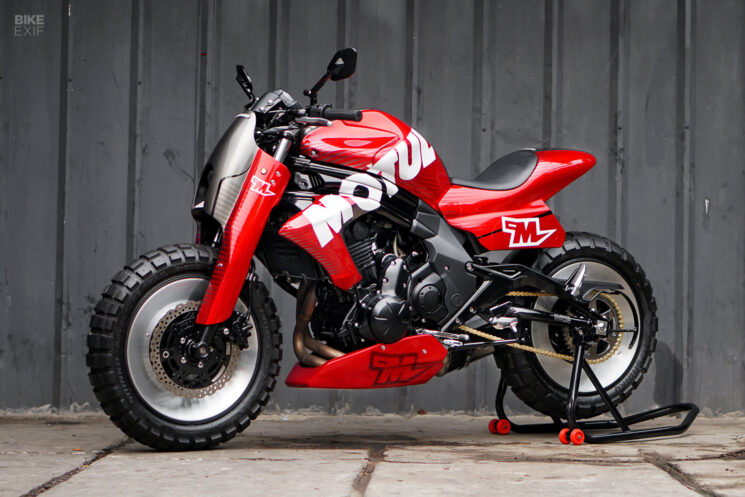
Kawasaki ER-6N by Katros Garage A quick scroll through Katros Garage’s social media channels yields impressive results. Andi Akbar, the workshop’s founder and proprietor, and his team have been pumping out all manner of custom bikes for some years. From choppers to café racers and everything in between, the Indonesian outfit is one of Southeast Asia’s best.
For this custom Kawasaki ER-6N project, Katros Garage teamed up with Ziko, a fellow Indonesian and professional drift racer. Ziko is partial to a nice motorcycle, but this is his first custom bike, so he wanted it to be as easy to ride as possible. With the brief calling for upright ergonomics, chunky rubber, and futuristic style, the group decided on a street tracker build.
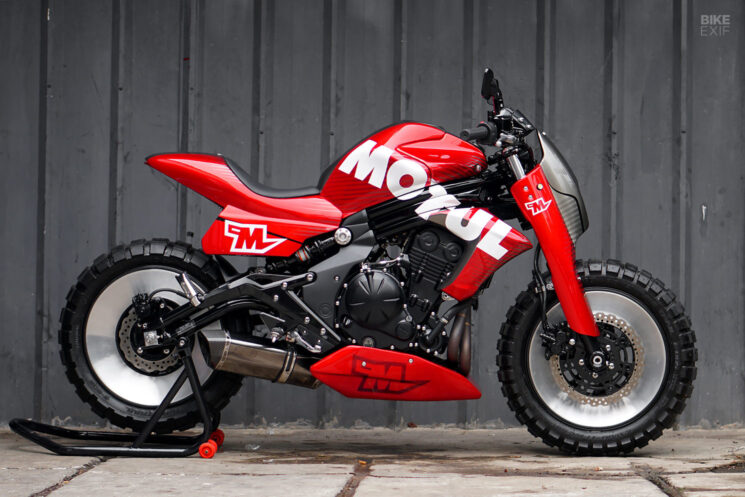
A bone-stock 2017 Kawasaki ER-6N was wheeled into the garage and, two months later, this emerged. The underpinnings of the bike remain as Kawasaki intended, with Katros focussing their efforts on the aesthetics.
A new front fork cover was shaped from a sheet of 1.2 mm steel by hand, flowing effortlessly into a custom headlight shroud. LED turn signals are barely visible on the fork covers. The tank and radiator shrouds were carried over from the stock bike.
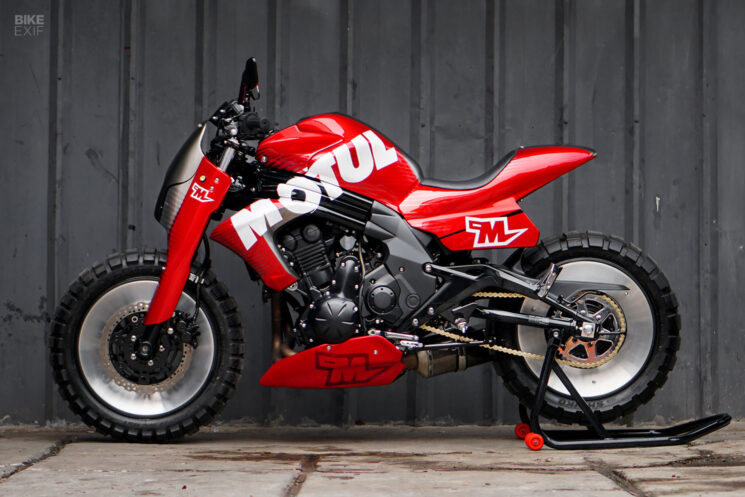
The belly pan and seat cover were also shaped by hand from the same steel as the fork cover. A Ducati Monster Evo 1100 served as the inspiration for the seat, as its ergonomics suited Ziko nicely. The seat works so well with the factory tank that you’d think it was stock.
The back end has a Triumph Trident 660 vibe, and we love how the integrated side covers flare out like wings. Three-in-one LED lights are embedded into the rear of the seat, which is finished with a discrete Katros Garage logo.

The wheels are stock (17” front and back), but they are adorned with custom wheel covers. Made from 2 mm aluminum, they lend an aggressive stance to the ER6. Keeping with the theme, Katros chose a set of Shinko E805s to wrap the wheels with; a suitably chunky 130/80-17 up front and a whopping 170-60-17 on the back.
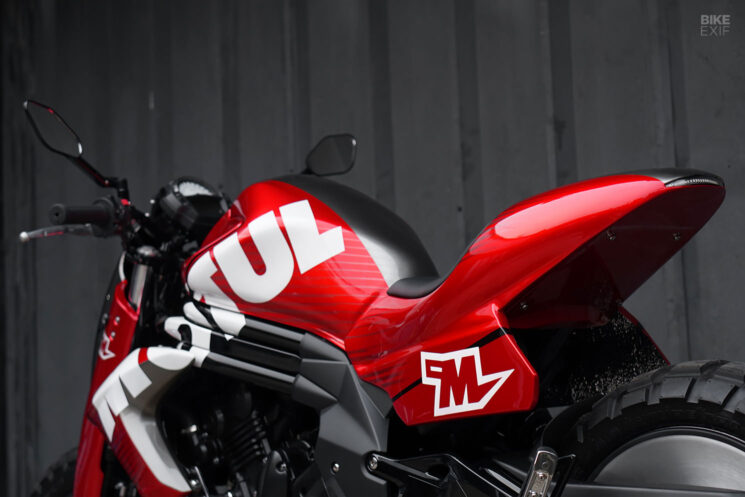
Drift racing isn’t the most inconspicuous sport, so a wild paint scheme was on the cards from the beginning. Candy apple red paint with airbrushed stripes and bold Motul logos were splashed on, paying tribute to Ziko’s sponsor and making this ER-6N stand out even more.
“We try to make people open their minds to any motorcycle,” Andi adds. “No matter how ugly, they can still be beautiful when modified with the right concept and soul.” [Katros Garage]

Buell XB12X Ulysses by Gdesign Buell’s first attempt at an adventure-touring bike, the XB12X Ulysses, utilized all of Buell’s packaging innovations. It had an aluminum perimeter frame fuel tank, hollow swingarm oil tank, and front perimeter brakes—but it wrapped them up in a rugged package with a comfortable (but very tall) seat and handlebars. It was quirky, no doubt, but it’s gone on to build a cult following.
When a 2006-model Buell XB12X appeared at Giacomo Galbiati’s GDesign studio, he thought the Ulysses could use a little more off-road flavor. So he transformed it into the mean machine you see here, dubbed ‘La Bulla.’
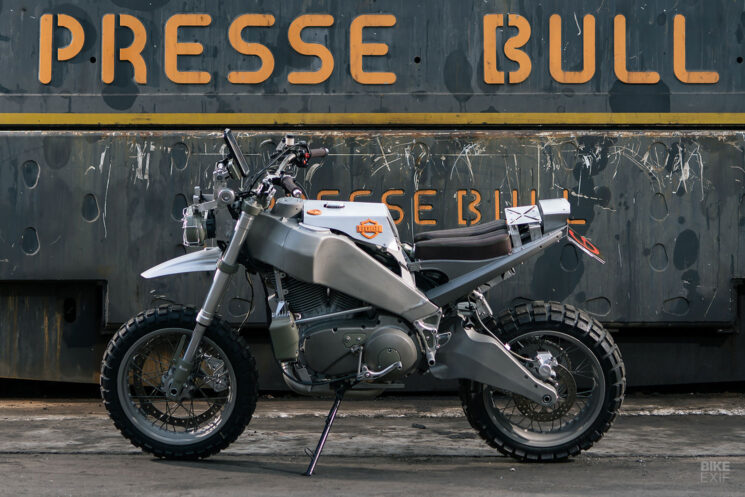
“The project comes from my passion for the Buell brand, combined with off-road travel,” explains Giacomo. “In my mind, it means being able to grind out kilometers on asphalt or dirt without limits. All the changes made to La Bulla go exactly in this direction.”
Imbuing an aggressive, edgy design into the bike meant that Giacomo got rid of most of Buell’s original bodywork. All the modifications were made by hand—and the list is extensive.
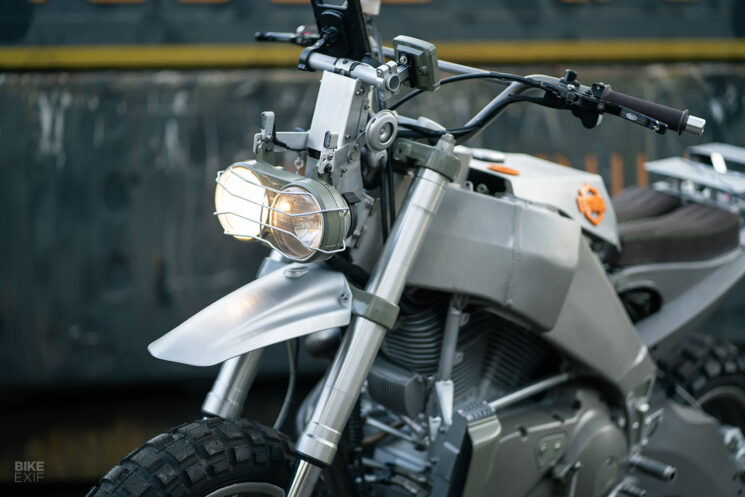
The front end now sports a custom GPS navigation tower and utilizes the twin factory headlights. The tower is fully customizable and currently features a waterproof phone case, a digital dashboard, and twin USB outlets. Tall, wide handlebars were bolted on with a Domino throttle, billet switchgear, and a master cylinder from Braking.
A pair of spoked wheels was sourced, along with dirt-appropriate adventure tires. The ‘tank shroud’ (which is just a cover for the airbox) was replaced with a custom aluminum unit. The seat was also made from scratch, with a utilitarian leather saddle paired with a custom luggage rack and an LED taillight
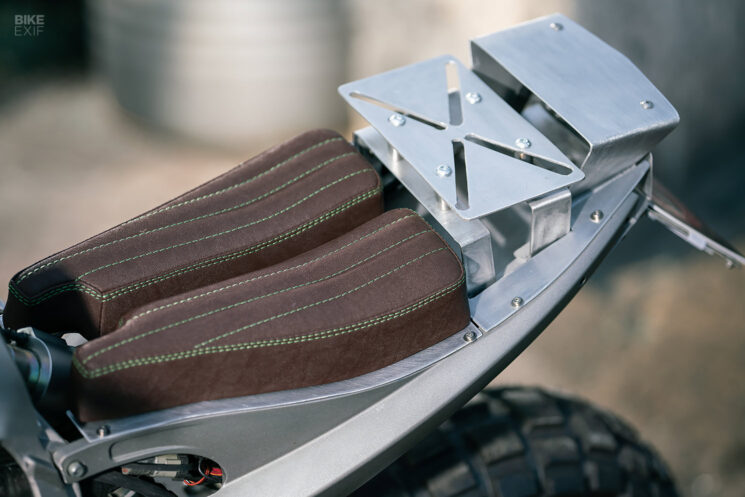
The frame and swingarm were sent off to be micro-peened and treated to a transparent finish, to avoid oxidation. The 1200 cc Sportster engine was overhauled and fitted with an HP Corse muffler and link pipe.
The belt-drive was converted to chain and the suspension was jacked by an inch front and back. Now equipped with Hyperpro springs, this Ulysses is more than ready for off-road forays.
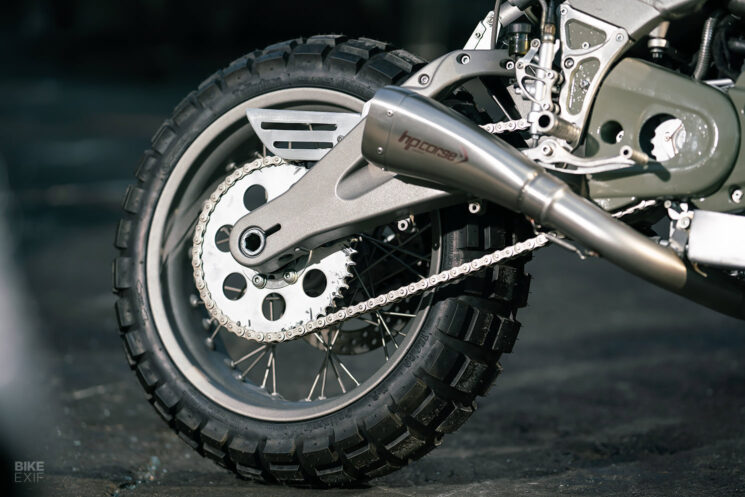
With all the factory bodywork gone, the bike weighs 30 kg [66 lbs] less. The bike recently won an award at the Italian Bike Week in September 2023 and placed among the first at the prestigious Big Twin Bike Show in Holland. While the pared-back industrial style won’t be everyone’s cup of tea, it’s hard not to appreciate the craftsmanship. [GDesign Instagram | Photos by Mattia Negrini]
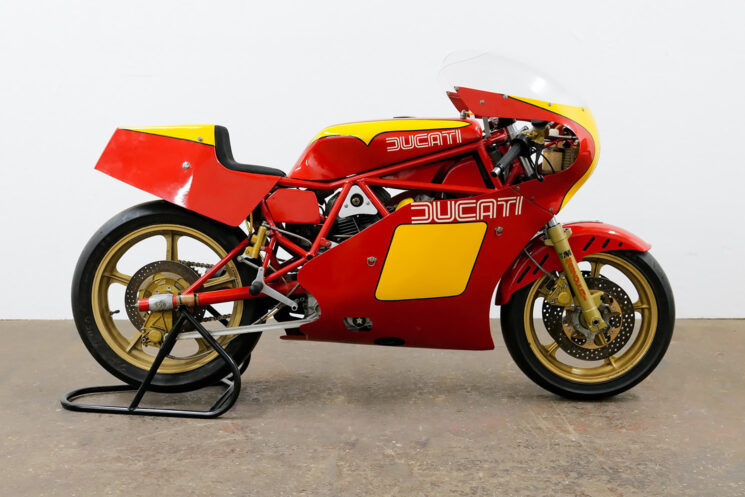
Sold: 1983 Ducati 600 TT2 at Moto Borgotaro An engine at the limit of the regulations, lightweight everything, and a group of talented riders. That’s the basic story of the Championship-winning Ducati 600 TT2. Unveiled in 1981, the bike was designed by Fabio Taglioni for the Formula 2 racing series.
The TT2 was going up against the Japanese four-cylinder bikes of the day, so Taglioni’s insistence on minimizing weight was at the forefront of its success. The trellis frame weighed a mere 7 kg [15.4 lbs] and was mated to a lightweight mono-shock swingarm and fully adjustable Marzocchi front forks with magnesium lowers. It rolled on lightweight Campagnolo rims, and Ducati even went so far as to drill out the cogs in the gearbox to shave off even more weight.
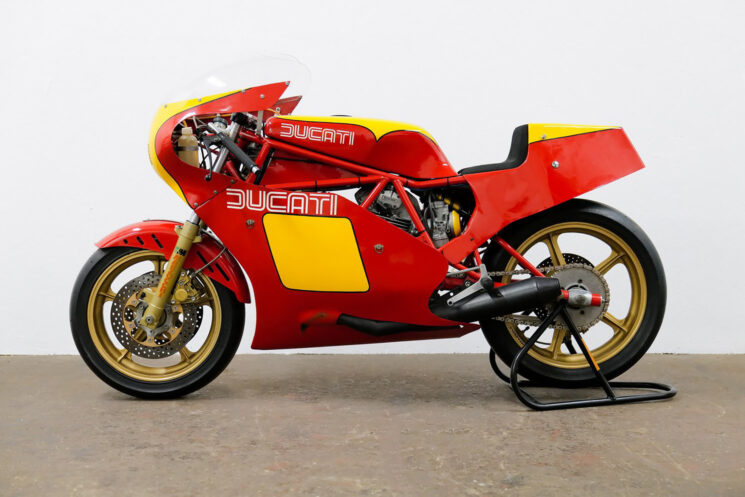
The engine was from a Ducati Pantah, but it was bored out by 1 mm to give a total displacement of 597 cc; 14 cc more than a stock Pantah. Racing cams (operated by Ducati’s now-famous Desmodromic system), larger valves, and a 10:1 compression ratio had the TT2 pump out 78 hp at 10,500 rpm.
Helping things along were a pair of smooth-bore 41 mm Dell’Orto carbs, modified by Malossi. The engine also featured exposed camshafts and a magnesium primary cover for extra weight saving.
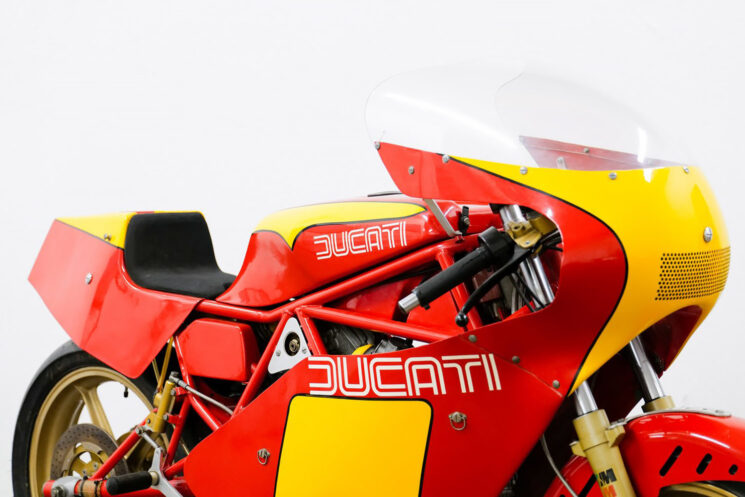
This TT2 in particular was recently offered for sale through Moto Borgotaro. It’s been well preserved over the last 25 years and looks almost brand new. From the fairing to the exotic componentry, the entire machine is a rolling work of art. Even if it weren’t an integral piece of Ducati history, it would still be an exceptionally desirable motorcycle.
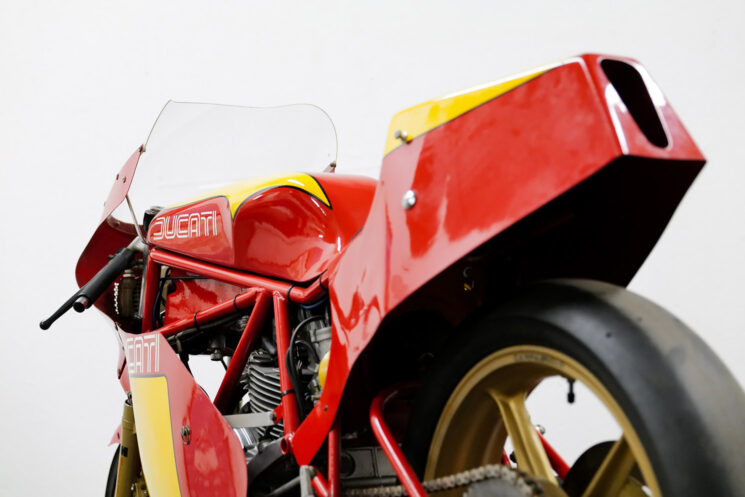
At the time of writing this, the TT2 was still for sale, but Moto Borgotaro’s website now lists it as sold. And that’s no surprise—this is an incredible example of an extremely rare model, and has the distinction of being one of only two TT2s ever imported into Japan.
It would look great in any Ducatisti’s collection, but we think it would look even better smashing down the straightaway in a vintage motorcycle racing event. [More]
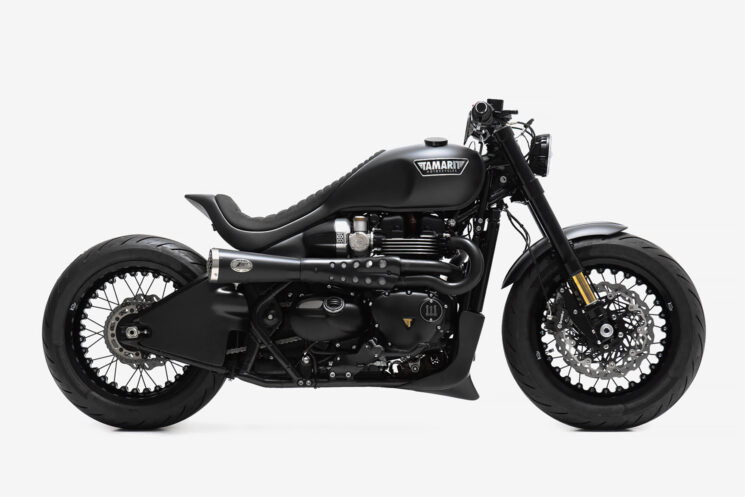
Triumph Bobber by Tamarit Motorcycles It seems that Tamarit Motorcycles is constantly in our news cycle—but with over 180 builds to their name, it’s easy to see why. The Triumph specialists have just produced another banger, with this beefed-up Triumph Bobber.
Tamarit set out to “showcase the full potential that the bobber style can offer.” So rather than try to turn it into something it’s not, they chose to lean into the Bobber’s inherent style and accentuated its lines. The silhouette is recognizable, but Tamarit has thrown several interesting details into the mix to turn it into a more aggressive beast.
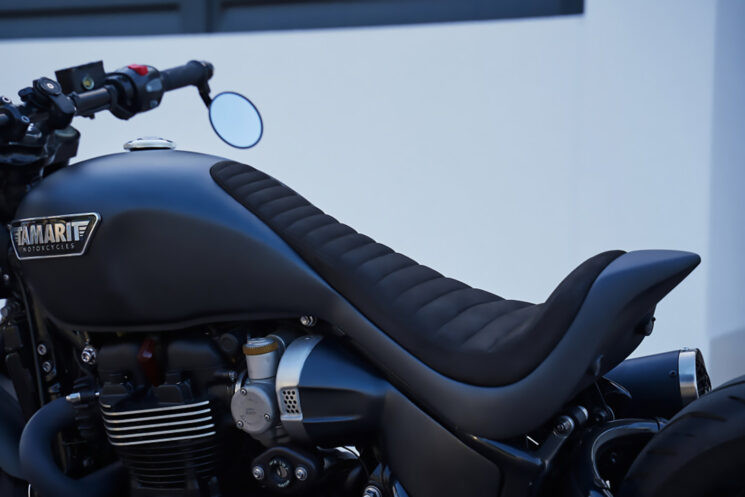
To achieve this, the crew fabricated a new tail section, blending it with the fuel tank to create a monocoque body that flows effortlessly along the backbone of the frame. Multi-function LED lighting was integrated into the back of the seat to keep the bike road legal and a black Alcantara saddle was draped on top. The way the seat pad runs onto the top of the tank has become a signature touch for Tamarit.
The subframe was modified to accommodate the new tail, shortening the already-truncated Bobber design. Another notable change is the swingarm cover, which wraps around the rear wheel and gives the delicate Triumph swingarm much more presence. It looks so good, that Tamarit will be making it available for sale soon.
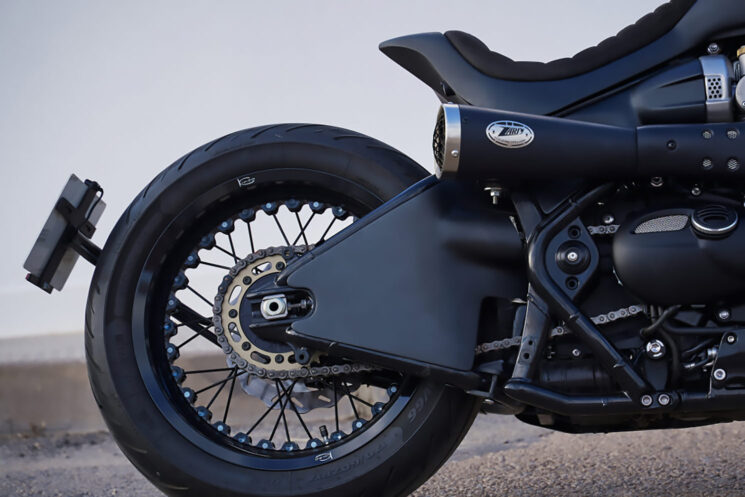
The Henry Ford-dictated color scheme of black, black, and black prompted Tamarit to replace the exhaust with a custom Zard piece. Öhlins forks and custom triple clamps were also bolted on, with a lean-sensitive LED headlight fitted to the fork clamp underneath a Motogadget Motoscope dashboard. Bar-end mirrors and Motogadget turn signals were added to the new drag-style handlebars.
A pair of gorgeous tubeless spoked wheels from Kineo was installed too, along with wave brake rotors and Avon AV66 rubber. And, like most of Tamarit’s bikes, the bike’s wiring is now run by a Motogadget mo.unit controller.

A custom belly spoiler was made to fit the front of the engine, further enhancing the Bobber’s aggressive style. The ignition was relocated to the left side of the bike, just above a neat storage box that adds the barest hint of practicality. Custom badges round out another sleek build from the Spanish powerhouse.
It’s all black, all bobber, and all Tamarit. [More]
from Bike EXIF https://ift.tt/4OBtgmv
No comments:
Post a Comment